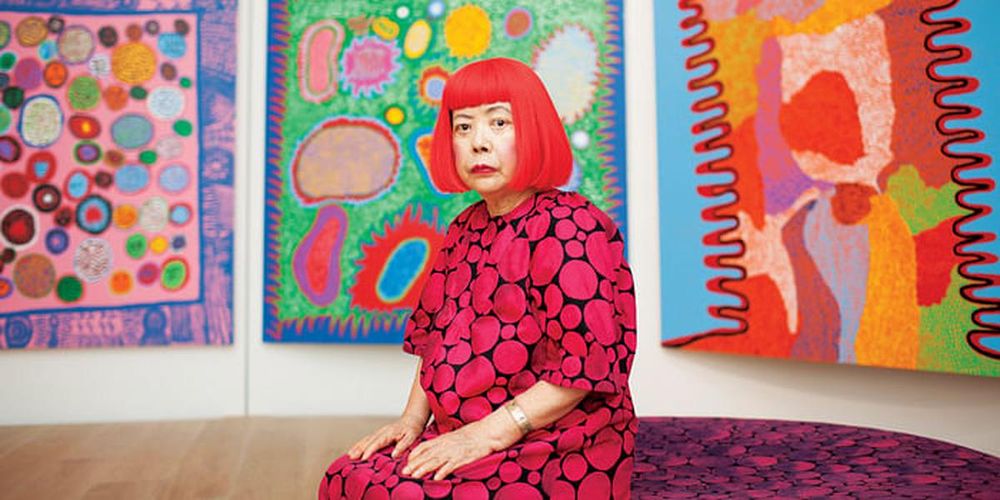
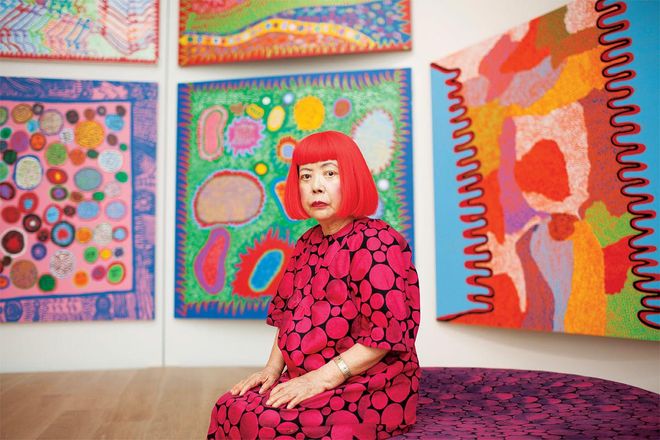
Yayoi Kusama by Noriko Takasugi
Yay! For Yayoi
Shiny, colourful, playful yet meaningful, vibrant with polka dots and plump with pumpkins, the work of the 87-year-old Japanese artist Yayoi Kusama has irresistible and broad appeal. Indeed, if interest in an artist can be gauged by the number of people who flock to their exhibitions, Kusama is arguably the most popular female artist in the world. In 2015, more than two million people in Latin America alone queued for her retrospective “Infinite Obsession,” camping out overnight in Mexico City to be certain of seeing her installations.
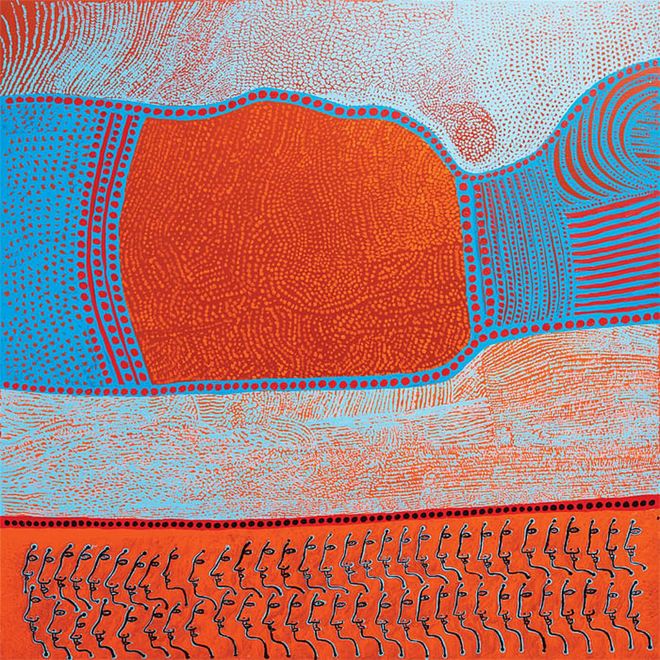
My Heart's Abode (2016)
Yay! For Yayoi
Part of Kusama’s legend is fuelled by the dramatic details of her life: She famously renounced her avant-garde existence in ’60s New York to return to Japan in 1973, eventually admitting herself to a Tokyo psychiatric clinic, to better manage the anxiety and depression that have plagued her since childhood. She has lived in the clinic for nearly 40 years. Kusama is herself something of a work of art, her diminutive figure instantly recognisable in photographs or in crowds by her synthetic vermillion Louise Brooks bob, carmine lipstick and A-line polka dot dresses. Even her wheelchair sports dots. (The dots, she has said, are a way of “translating the obsessional images… the products of neurosis and therefore inextricably connected with my disease.”) But then, self-image and fashion have long been part of her practice. Even by the permissive standards of ’60s New York, the dresses she designed—and wore—there were shocking, with circular cut-outs positioned to reveal the wearer’s breasts and rear. Not so the collection she created for Louis Vuitton in 2012, which ran to drop-waisted dresses, cropped trousers, classic trench-coats, silk squares and bags, all covered with irregular polka dots.
The seeds of Kusama’s fascinating career trajectory were sown when, in her 20s, she came across the work of Georgia O’Keeffe. The American artist’s luscious, highly stylised floral paintings were a revelation. “I’d been dreaming of going to America and escaping my family,” she tells me by email from the clinic in Tokyo. (Her English is fluent, but she is uncomfortable speaking it.) “So I wrote to her [O’Keeffe]. And miraculously, she responded with great kindness. Her letter gave me the courage I needed to leave.”
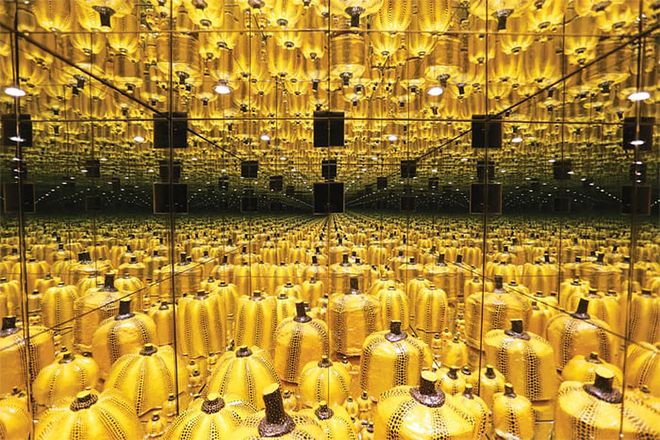
All the Eternal Love I Have for the Pumpkins (2016)
Yay! For Yayoi
As a young woman in New York, she thrived and innovated, experimenting with silkscreen wallpapers three years before Andy Warhol’s Cow Wallpaper (Warhol had come to the opening of her 1963 show, “One Thousand Boats,” and told her he loved it); and exhibiting her soft sculptures ahead of Claes Oldenburg’s. The first of her discombobulating Infinity Mirrored Rooms also predated Lucas Samaras’ mirrored Room No 2, which was hailed as ground-breaking. “There has finally been a realisation that art-historically, she is an incredibly important figure,” says Glenn Scott Wright, the Co-director of the Victoria Miro gallery in London, and a personal friend of Kusama. “The annoying thing for her was that the artists she influenced were men; they got taken up by the art world, and she didn’t,” he says.
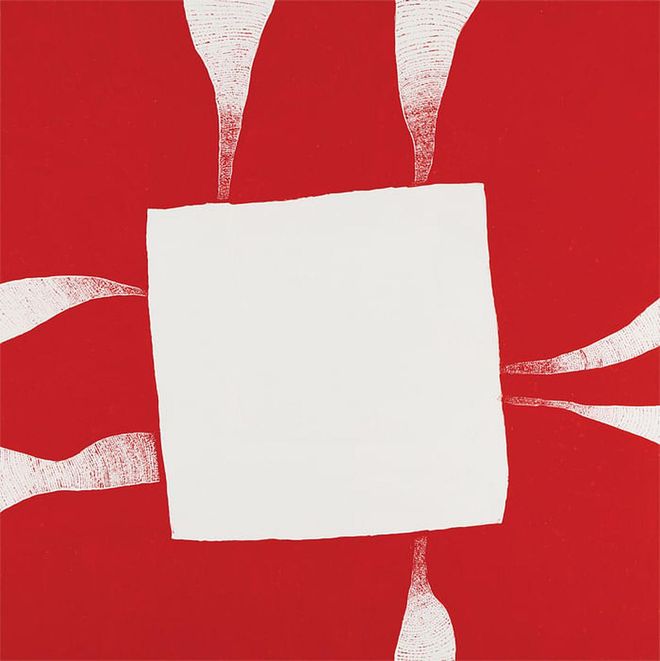
Lights of the Heart (2016)
Fast forward several decades, and after a period of relative obscurity, Kusama was invited to represent Japan at the 1993 Venice Biennale. She created another mirrored room filled with pumpkin sculptures, in which, she resided, dressed as a magician. The motif of the pumpkin continues to fascinate her.
“My love for them stretches back to when I was a little child,” she says. She grew up during World War II, when pumpkins were the principal food on which her family subsisted. “I have always found them to be such tender things to touch and so wonderfully humorous, humble and appealing. They have a warm feeling and human-like quality in their form. They make me feel happy. They are my friends. And I will always celebrate them in paintings and sculptures.”
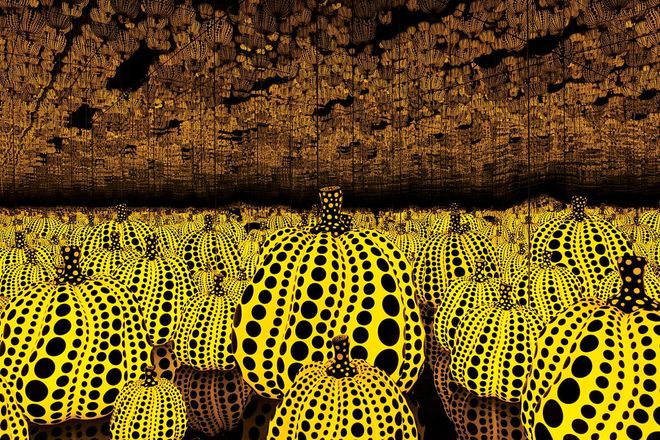
All the Eternal Love I Have for the Pumpkins (2016)
Yay! For Yayoi
The latest iteration of her pumpkin sculptures, this time in mirror-finished bronze, are among the never-before-seen works in her new London show, currently on display at both Victoria Miro galleries. “I love bronze as a material,” she adds. “Its warmth and endurance are very suited to the character of the pumpkin.”
Mirrors, too, continue to loom large in her works. “There will be three spellbinding new mirror rooms in my exhibition,” she says. “In the new version, you’ll be able to walk into the space and be surrounded by an infinite field of illuminated pumpkins.”
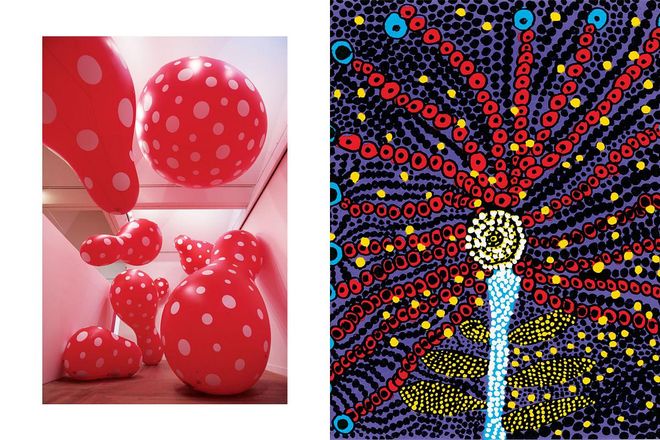
Left: Part of Dots Obsession. Right: Flowers Bloomed in My Heart (2011)
Yay! For Yayoi
She has even produced some new paintings, part of an ongoing series she calls “My Eternal Soul.” She says her canvases “join all the philosophies of my art: An explosion of ideas that represent my preoccupation with infinity and the search for peace and love that has always been at the heart of my work. I feel my happiness through their vibrant colours; their strength and clarity flood me with energy.”
Although she is now in her late 80s, Kusama shows no sign of slowing down. “I am an artist. My work is my life. I have so much I want to do [that] I am determined to live until I am 300 years old. Each day I create a new world by making my art. I will never run out of ideas. All I hope to do in the time left is to turn as many of them into concrete forms as possible.”

Pumpkin (2016)
Yay! For Yayoi
By Claire Wrathall
This article originally appeared in the August 2016 issue of BAZAAR Art Singapore.